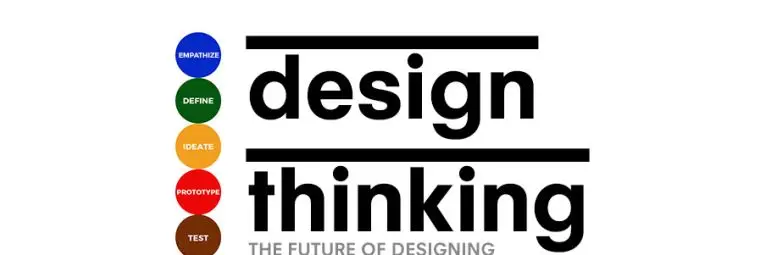Design Thinking; The Future of Designing
You are no stranger to the relentless drive to innovate if you are a designer. After all, it’s the key to growth and prosperity. What gives designers the high ground in competitive fields is their potential for innovation and the capacity to formulate solutions that are at once actionable and efficient.
Most of the successful enterprises and start-ups out there are all born out of innovation. To retain or further advance their position in their respective markets, the biggest challenge facing most of these businesses is to continue that innovation. Innovation should not be a one-time affair; it must be part of the DNA of the business.
This is where design thinking is applied as innovation doesn’t happen overnight.
What is design thinking?
Design thinking is an iterative process in which problem solvers attempt to consider customer/user needs, question their assumptions, and relabel the current problem to recognize methodological approaches and solutions that are unlikely to be noticeable with only a basic level of understanding.
Why should people implement design thinking in their organizations?
Several application-based benefits of design thinking help the company succeed in the market. Data and facts alone won’t solve problems. To develop useful and realistic solutions to challenges, design thinking connects data and its available uses.
Companies will deliver ideal high-speed solutions with design thinking without losing the reliability of the operation. Fast problem-solving is a highly preferred ability that customers in an enterprise are searching for. It is also an effective way to build a product or framework by using shared knowledge and expertise to create common ground within your team.
The various stages of design thinking:
- Empathize:
- Define
- Ideate
- Prototype
- Testing
Let’s take a closer look at these stages.
-
Empathize:
Identifying the issue is the primary step. It requires thorough research into what is required and felt by your users. Users need to spot areas of inconvenience while also knowing what needs to be altered.
The purpose of empathizing is to answer the following question:
What do my customers need, to be satisfied with the product?
-
Define:
Classify these needs and assess the various possibilities available after defining the needs of your users. After correctly evaluating the collection of data you have obtained, these opportunities must be identified.
For a better understanding of the processes to be followed, the list of criteria and concerns must be categorized.
The primary objective of the defining method is to respond to the following question:
How to define the needs of my customers commercially?
-
Ideate:
The resources you identify must be useful to your end-users and the company. Ideating is a creative way of thinking and developing the best possible approach by considering all available insights and possibilities.
The principal objective of the method of ideation is to address the following question:
How will I deliver the best possible solution in the most innovative way possible to please my customers?
-
Prototype:
Prototypes are an experimental design that begins the process of translating your creative ideas into a concrete resource. Prototypes for design require the development of a moderate and budget-friendly version of the end product.
The main objective of prototype development is to address the following question:
How can I research the concepts generated for their real-time applicability?
-
Testing:
The last objective is to test the prototypes and, based on the test results, create the next iteration. Testing is vital to know the product’s functioning and operational viability.
The main objective of the method of testing is to address the following question:
To improve its quality and meet its requirements, what components of the product need changes?
To achieve the best possible result, all stages of Design Thinking are compulsory. Missing any move would delay any organization’s developmental process.
Businesses that wish to succeed will inevitably crash into a brick wall without pursuing the various phases of design thinking. For companies in a competitive environment, design thinking is a rewarding asset to have.
On a concluding note, we can say that design thinking is a critical thinking, problem-solving, and iterative process. Designers and leaders who have an affinity for taking care of problems and solving them can opt for design thinking.
With the aid of this by analyzing how consumers interact with certain goods and services under different environments, all stakeholders would be able to dig deeper and come up with better designs to enhance the user experience.



Want to Become a Designer ?
Strate is a unique design school that nurtures your talents as a designer by offering state-of-the art designing courses in Bangalore.
Join Strate